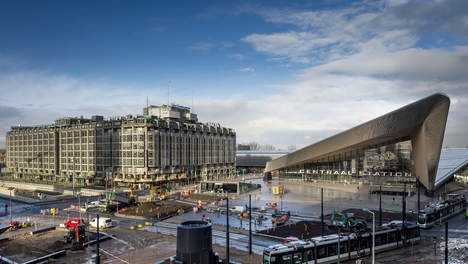Station redevelopment in major cities has not always integrated stations into the inner city landscape as intended. This is the conclusion of PhD candidate Ana Luísa Martins da Conceição. “The various parties often fail to define comprehensive common goals in advance,” she concludes.
The HSL station in Rotterdam, for example, has a wide underpass with lots of shops, but anyone trying to pass through from the main city shopping area encounters a serious obstacle in the form of Netherlands Railways ticket gates. “These gates are preventing a good connection with the inner city,” says Da Conceição. “The balance between 'node' and 'place' is missing, and the spatial solutions lack architectural oversight.”
For her dissertation ‘From city's station to station city: an integrative spatial approach to the (re)development of station areas’, the Portuguese doctoral candidate studied six European cities: Amsterdam, Utrecht, Basel, Lisbon, Antwerp and Turin. To her mind, Utrecht is the most successful of the six, featuring a new town hall close to the station and a promenade traversing the railway lines. Having said this, none of the cities have managed to create a real ‘station city’. In some places, main traffic routes cross pedestrian areas and the railway line itself sometimes forms a barrier. In addition, the public transport hubs are nowhere near as multifunctional as intended, often featuring a one-sided range of shops and few combined amenities for leisure activities, living and working. However, a self-supporting station with a bit of everything is not a guarantee for success. An introspective design of this kind would discourage travellers from going into the city.
So where have things gone wrong? According to Da Conceição, spatial planning is the main culprit. “The integrating powers of architecture should be put to better use.” She thinks that both public administrations and railway parties focus too much on following their own 'track' when it comes to urban planning.
She would recommend organising the design brief around objectives that have been endorsed by all the stakeholders in advance. Achieving a spatial balance between ‘node’ and ‘space’, between transport hub and destination, is a vitally important part of this.
